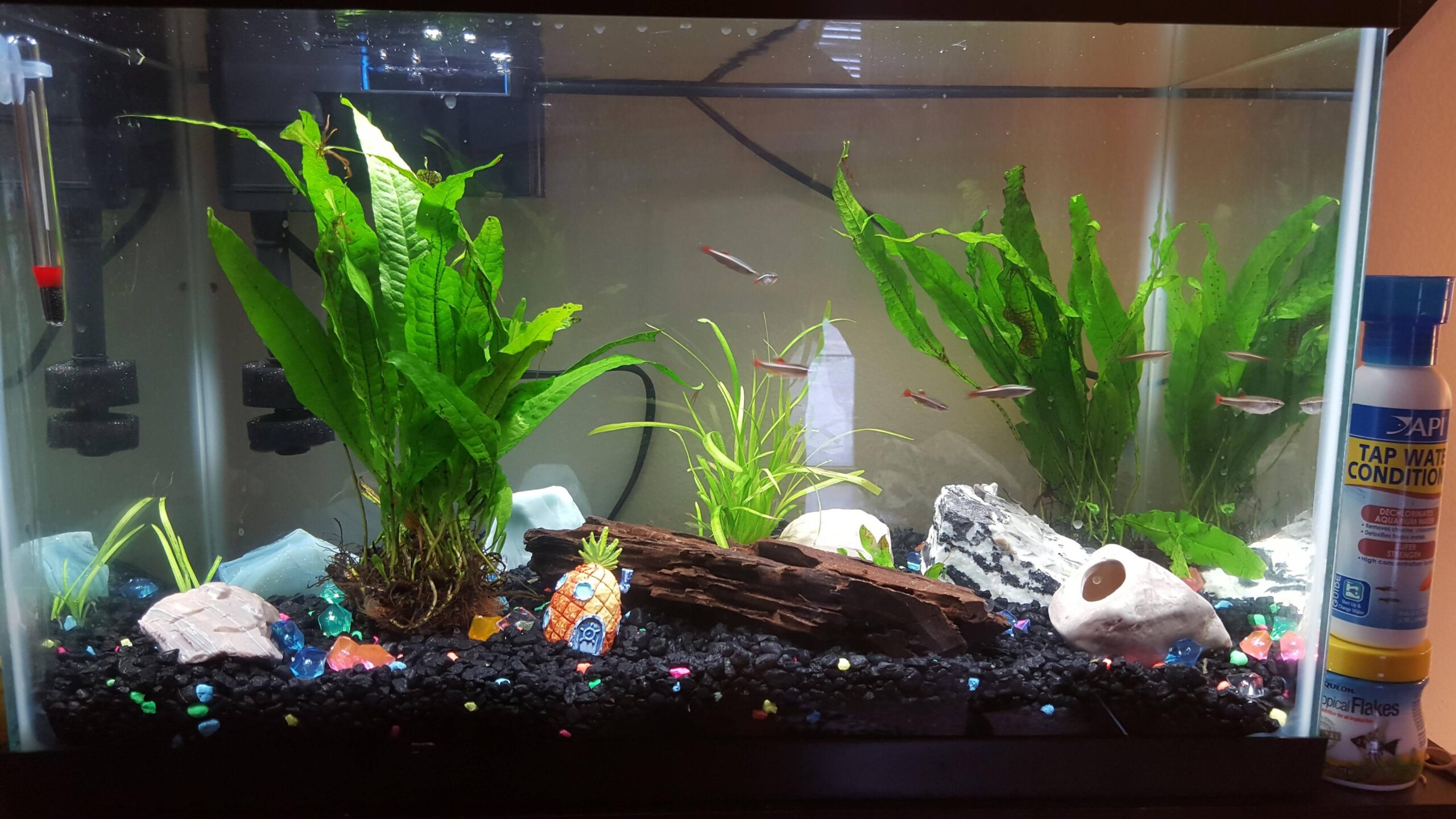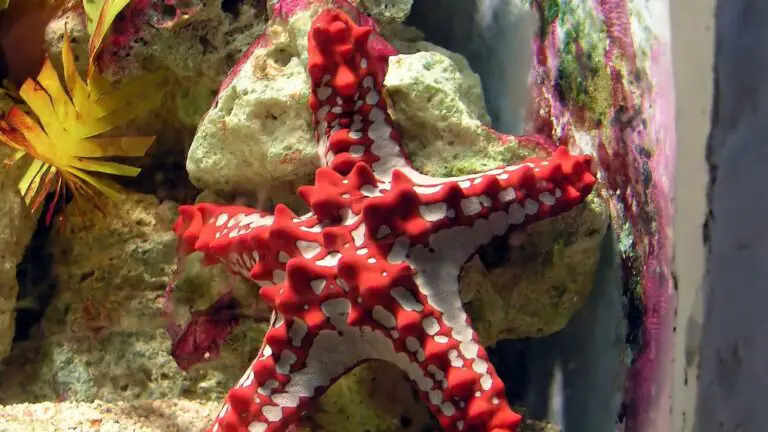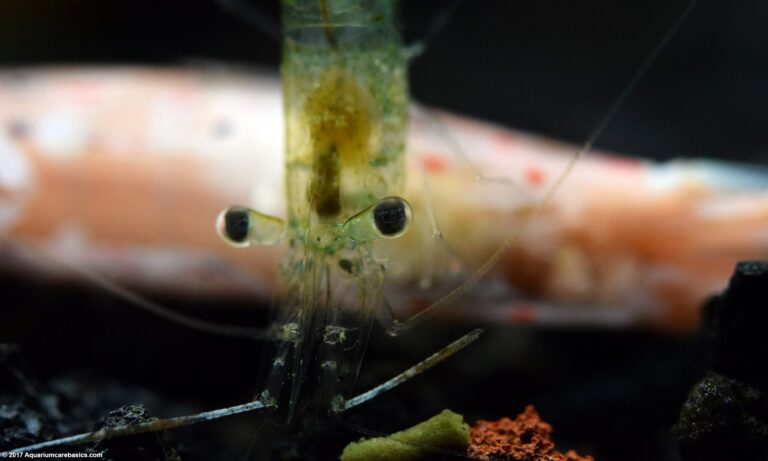Ammonia Spike in Cycled Tank
A cycled tank refers to an aquarium that has been set up for some time and is stable with the water parameters. An ammonia spike in a cycled tank can occur if there are too many fish or other organisms present, resulting in an excessive amount of waste being produced. Additionally, overfeeding, adding new fish without proper quarantine and introduction procedures, insufficient filtration or circulation systems, as well as sudden changes to the environment such as pH levels could all contribute to an ammonia spike.
It’s important to monitor levels regularly and act quickly when signs of elevated ammonia arise; this may include performing more frequent partial water changes until the issue is resolved. In extreme cases it may be necessary to remove some of the fish population in order to reduce bioload and stabilize the system again.
If you have a newly cycled tank, it’s important to keep an eye on the levels of ammonia in the water. A sudden spike in ammonia can be dangerous for your fish and other aquatic creatures that live in your tank. If you notice an increase in ammonia levels, test the water again and take corrective measures such as changing out some of the old water or adding beneficial bacteria to help break down any organic matter that may be contributing to the spike.
How to Keep Ammonia Levels down in Fish Tank
Ammonia is a common problem in fish tanks, but fortunately it can be managed with proper maintenance. The best way to keep ammonia levels down is to regularly change the water and make sure that your tank is not overstocked with too many fish. Additionally, removing any uneaten food or decaying organic materials from the tank will help reduce the amount of ammonia present in the water.
Regularly testing and monitoring your water’s pH balance and adding beneficial bacteria-based products can also help keep ammonia levels low and promote a healthy aquatic environment for your fish.
Signs of Ammonia Spike in Fish Tank
When it comes to maintaining the health of a fish tank, one of the most important factors is keeping an eye out for signs of ammonia spikes. Ammonia can be introduced into a fish tank by overfeeding, decaying organic matter, or other contaminants such as cleaning products. If left unchecked, high levels of ammonia can quickly lead to toxic conditions in your aquarium and even death for its inhabitants.
Signs that you may have an ammonia spike include cloudy water, visible stress in the fish (e.g., labored breathing), and discoloration on their fins or scales.
Ammonia Spike Symptoms
Ammonia spikes can cause a variety of symptoms in fish, including gasping at the surface, loss of appetite, listlessness and clamped fins. If left untreated, these ammonia spikes can lead to serious illnesses such as fin rot or an internal bacterial infection. It is important to take immediate action if you notice any signs of an ammonia spike in your tank by doing a partial water change and testing for elevated levels of ammonia with a test kit.
How to Fix Ammonia Spike
If you’re experiencing an ammonia spike in your aquarium, the first thing to do is perform a large water change of 20-50% of the tank’s volume. Make sure to use dechlorinated water and remove any debris or waste from the gravel. You can also test your filtration system to make sure it is working properly and replace any filter cartridges as necessary.
Additionally, adding plants or live rock can help absorb excess ammonia levels and reduce spikes in the future.
Ammonia Spike After Adding Fish
Adding fish to an aquarium can cause a sudden spike in ammonia levels. This is because when fish excrete waste, it releases ammonia into the water which can quickly build up and become toxic for the inhabitants of your tank. To prevent this from happening, regular water changes should be done to dilute the concentration of ammonia in order to keep your fishes healthy and safe.
Additionally, you may want to consider adding a biological filter or live plants as they help break down toxins like ammonia that are present in aquariums.
Ammonia Spike After Water Change
A water change is a necessary process for maintaining the health of fish in an aquarium. During this process, old tank water is removed and replaced with fresh, clean water. Unfortunately, the sudden influx of fresh water can cause an ammonia spike due to the decomposition of organic matter present in the tank such as uneaten food or waste from fish and other organisms living in it.
To help prevent this sudden increase in ammonia levels after a water change, be sure to test your aquarium’s parameters regularly and use high quality filtration systems to reduce organic matter build-up before you do a large scale water change.
Ammonia Spike in Tank
Ammonia spikes in aquarium tanks can be caused by overfeeding or not changing the water often enough. Ammonia is toxic to fish and other aquatic life, so it’s important to monitor ammonia levels and take action if they begin to rise. If left unchecked, an ammonia spike could result in serious illness or even death for the inhabitants of your tank.
Fortunately, there are a few simple steps you can take to prevent this from happening such as performing regular water changes, adjusting feeding habits and using a quality filter system.
What Causes Ammonia Spike in Aquarium
One of the most common causes of a spike in ammonia levels in an aquarium is overfeeding. When too much food is present, waste from the fish builds up faster than it can be broken down by beneficial bacteria, resulting in a high concentration of ammonia. Additionally, if there are not enough beneficial bacteria to break down the waste or if there is inadequate filtration and water changes, this can result in an ammonium spike as well.

Credit: www.myaquariumclub.com
How Do You Fix a Ammonia Spike in a Fish Tank?
One of the most common issues that fish tank owners may face is an ammonia spike. Ammonia can come into your tank through a variety of sources, including decaying material, overfeeding, or insufficient water changes. High levels of ammonia can be toxic to fish and cause them to become sick or even die.
To fix an ammonia spike in your aquarium, it’s important to first identify what caused the spike in the first place so you can take steps to prevent it from happening again. This could include changing out old filters and regularly cleaning tanks as well as checking for any leaks that might be introducing too much waste into the system. Once you know what’s causing the issue it’s time to start treating your tank with a dechlorinator such as Prime or Ammo-Lock which will help remove excess ammonia from your water while also protecting beneficial bacteria colonies that help keep nitrate levels low.
Additionally, increasing aeration with air pumps and airstones will help create a healthy environment for your fish by promoting oxygen exchange between surfaces within the tank itself and helping maintain proper pH balance. Finally, performing regular partial water changes using treated tap water helps dilute existing concentrations of toxic substances like ammonia as well as replenish essential minerals for a thriving aquatic ecosystem in general!
How Long Does It Take for Ammonia to Spike in a New Tank?
When it comes to ammonia spikes in a new aquarium, the answer depends on several factors. Ammonia can begin to spike within 24 hours of starting up a new tank and is usually highest at the 7-10 day mark. This is because as beneficial bacteria establishes itself in your filter media and substrate it takes some time for colonies to form which break down toxic levels of ammonia into harmless nitrates.
To speed up this process you should do regular water changes and make sure that you’ve seeded your filter with bacteria from an established aquarium before adding fish or other livestock. Additionally, keeping feedings light will reduce the amount of uneaten food decaying in your tank which can also cause high levels of ammonia.
I Had an Ammonia Spike in 4 “Cycled” Fish Tanks! Here’s What I Did
Conclusion
Overall, it is important to keep an eye on the ammonia levels of a cycled tank. Ammonia spikes can occur for many reasons and can be very harmful to fish and other aquatic life. By monitoring your tank regularly, you can easily detect any sudden increases in ammonia, allowing you to take corrective measures before any serious damage occurs.
Furthermore, regular water changes and the use of beneficial bacteria products are effective methods for maintaining healthy ammonia levels in a cycled tank.






